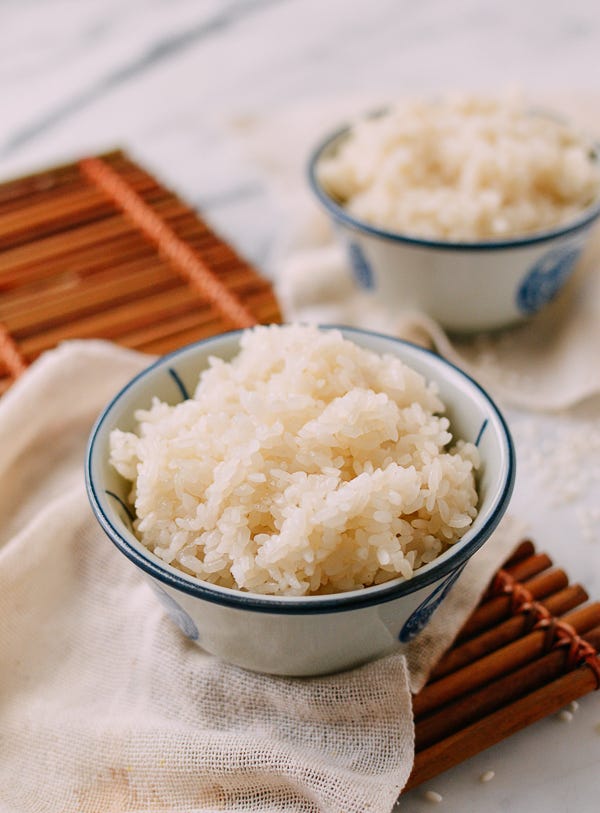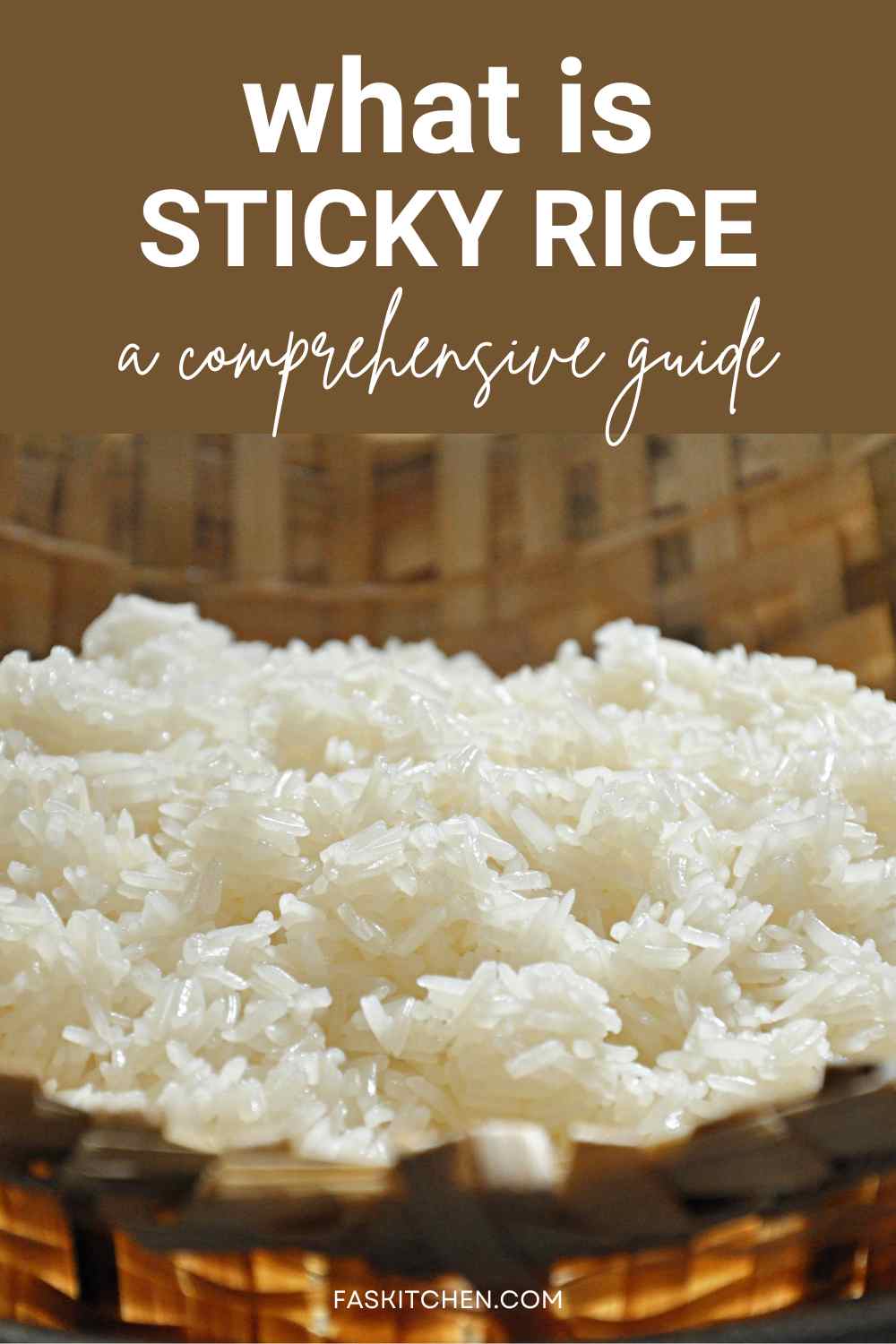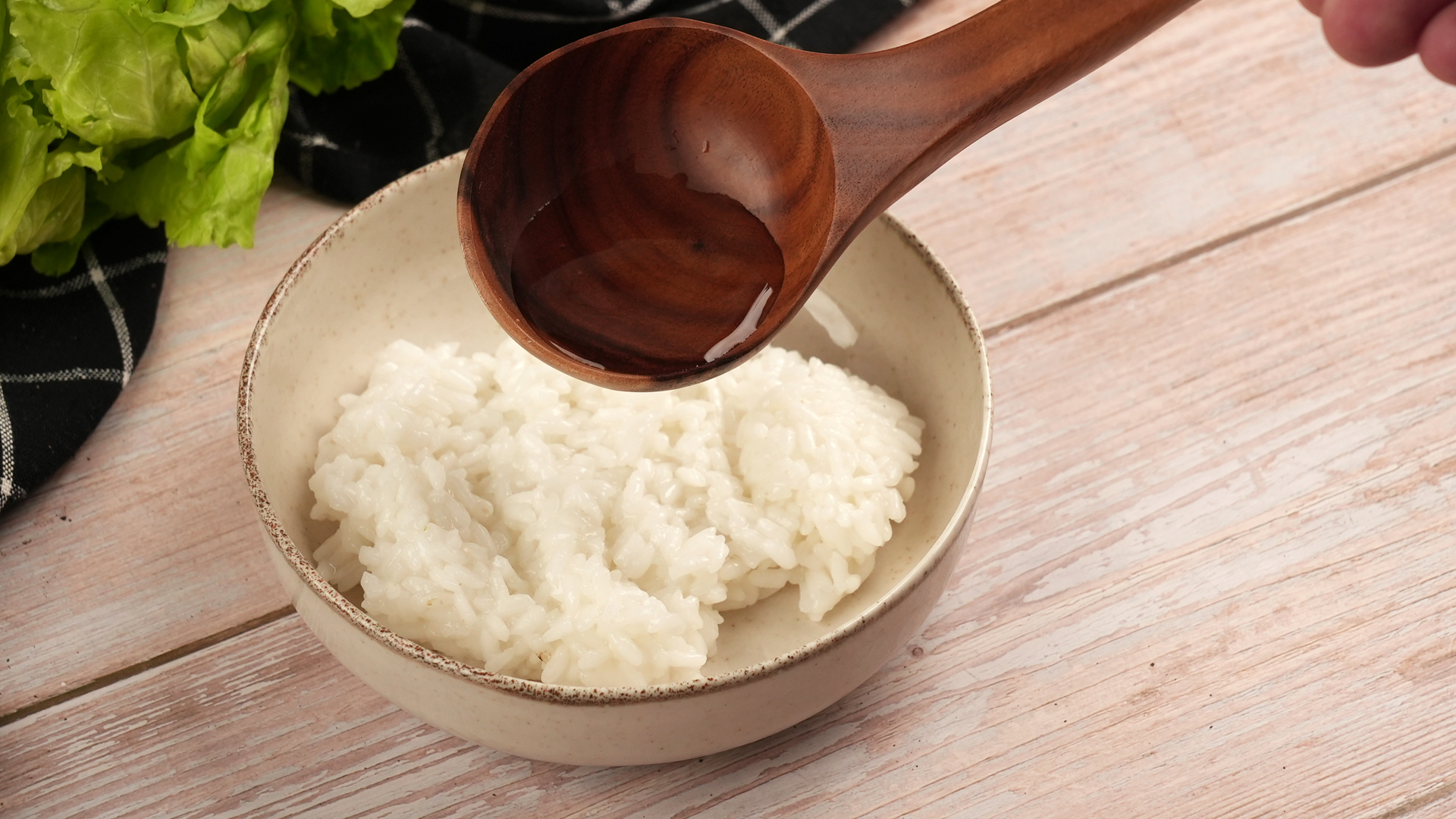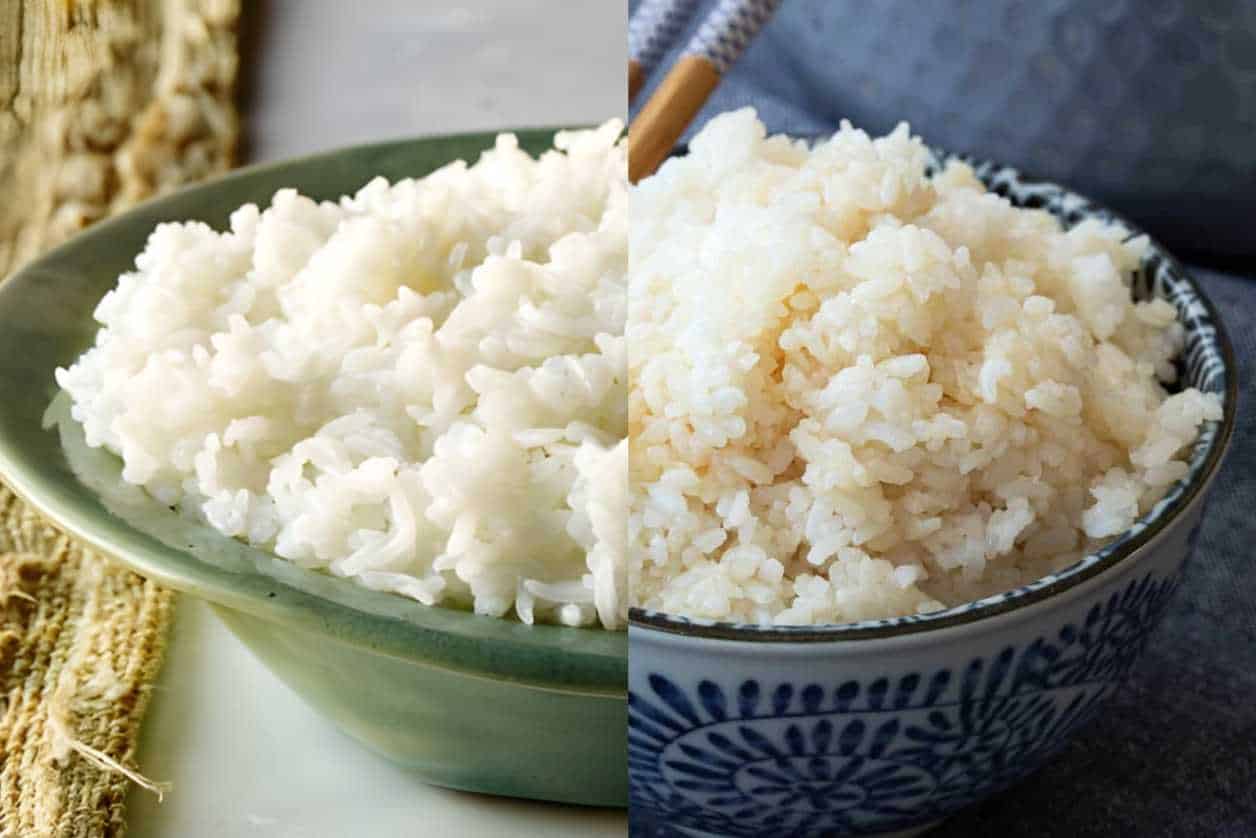Glutinous Rice: The Foundation Of Sushi

Glutinous rice, also known as sticky rice or sweet rice, serves as the foundation of sushi, providing it with its signature texture and taste. This unique type of rice is different from regular rice due to its high starch content, which gives it its sticky and chewy characteristics. Glutinous rice is cooked by soaking it in water before steaming, resulting in a soft and sticky texture that is ideal for shaping into sushi rolls. Its ability to hold together well ensures that each sushi bite is perfectly intact, ensuring a delightful and satisfying culinary experience.
Glutinous Rice Characteristics And Cooking Process
Glutinous rice, also known as sticky rice or sweet rice, stands out from regular rice due to its unique characteristics. This type of rice has a higher starch content, which gives it its sticky and chewy texture when cooked. To prepare glutinous rice, it is soaked in water for several hours before steaming. The steaming process ensures that the rice becomes soft and sticky, making it perfect for shaping into sushi rolls or other dishes that require a sticky consistency. The result is a delightful and satisfying culinary experience with each bite of sushi or other glutinous rice-based dishes.
Glutinous Rice Vs Regular Rice: Key Differences
When comparing glutinous rice and regular rice, there are several key differences to consider. One of the main distinctions lies in their starch content. Glutinous rice has a higher starch content, which gives it that sticky and chewy texture when cooked. In contrast, regular rice has a lower starch content, resulting in a fluffier and less sticky consistency. Additionally, glutinous rice is used mainly in Asian cuisines for dishes like sushi and sticky rice desserts, while regular rice is more commonly consumed worldwide for meals like stir-fries and rice bowls. These differences in texture and culinary applications make each rice variety unique in its own right.
Sushi Rice: The Heart Of Sushi

Sushi rice is the essential component that brings together all the elements of a perfect sushi bite. Its unique characteristics and preparation process make it the heart of sushi. Sushi rice is short-grain rice that is cooked with a special vinegar seasoning, giving it a tangy and slightly sweet flavor. This balance of flavors complements the freshness of the fish and enhances the overall taste of the sushi. The stickiness of sushi rice allows it to hold its shape when rolled and makes it easy to pick up with chopsticks. Without sushi rice, sushi simply wouldn’t be the same.
Sushi Rice Preparation And Vinegar Seasoning
Sushi rice preparation is a crucial step in creating the perfect sushi bite. After rinsing the rice, it is cooked with water to achieve the desired fluffy texture. Once the rice is cooked, it is essential to season it with vinegar to give it the signature tangy flavor. Rice vinegar is typically used for this, along with a small amount of sugar and salt to balance the taste. The vinegar seasoning is carefully mixed into the rice while it is still warm, ensuring that every grain is coated evenly. This step adds an extra layer of flavor to sushi and makes it distinctly delicious.
Sushi Rice In Traditional Japanese Cuisine
Sushi rice holds a special place in traditional Japanese cuisine. Known as “shari” in Japan, sushi rice is the heart and soul of sushi. Its unique texture, combined with the tangy flavor from the vinegar seasoning, creates the perfect base for sushi rolls and nigiri. Sushi rice is carefully prepared and seasoned to ensure the right balance of sweetness and acidity. This attention to detail is what sets Japanese sushi apart and makes it a culinary delight. From traditional sushi bars to elegant sushi platters, sushi rice is the essential ingredient that brings it all together.
Glutinous Rice Benefits And Nutritional Value

Glutinous rice, also known as sticky rice or sweet rice, offers several health benefits and is also a good source of nutrition. It is low in fat and cholesterol, making it a healthy choice for maintaining heart health. Glutinous rice is rich in carbohydrates, providing a source of energy, and it also contains small amounts of protein and fiber. Additionally, it contains essential minerals such as magnesium, phosphorus, and potassium. When consumed in moderation as part of a balanced diet, glutinous rice can contribute to overall health and well-being.
Glutinous Rice Health Benefits
Glutinous rice, also known as sticky rice, offers several health benefits. While it is often associated with indulgent desserts and traditional Asian dishes, glutinous rice has some surprising nutritional qualities. It is low in fat and cholesterol, making it a heart-healthy choice. Glutinous rice is also rich in carbohydrates, which provide a source of energy. Additionally, it contains small amounts of protein and fiber. This combination of nutrients makes it a satisfying and nourishing option. When consumed as part of a balanced diet, glutinous rice can contribute to overall health and well-being.
Glutinous Rice In Asian Culinary Traditions
Glutinous rice, also known as sticky rice, holds a special place in Asian culinary traditions. In countries like Thailand, Vietnam, and China, it is a staple ingredient used in a variety of dishes. In Thailand, it is the key component of the popular dish “khao niao,” which is sticky rice served with grilled meats and spicy dips. In Vietnam, sticky rice is used to make “xoi,” a sticky rice dish often topped with savory ingredients like grilled pork or mung bean paste. In China, glutinous rice is an essential ingredient in making traditional dumplings and rice cakes. Its unique sticky texture adds a delightful chewiness to these dishes, making them a favorite among locals and visitors alike.
Sushi Rice Perfection: Techniques And Tips

To achieve sushi rice perfection, there are a few techniques and tips that can elevate your sushi-making skills. First, make sure to rinse the rice thoroughly before cooking to remove any excess starch. Use a rice cooker or follow the stovetop method with precise measurements of water and rice. Once cooked, fluff the rice gently with a rice paddle to release excess steam. When seasoning the sushi rice with vinegar, sugar, and salt, make sure to mix it gently using a slicing motion to avoid smashing the grains. Lastly, let the seasoned rice cool slightly before using it for sushi to ensure the best texture and flavor. Mastering these techniques and tips will help you create sushi rice that is perfectly sticky, flavorful, and ready for your favorite sushi creations.
Secrets To Perfectly Cooked Sushi Rice
To achieve perfectly cooked sushi rice, there are a few secrets that sushi chefs swear by. First, rinse the rice thoroughly before cooking to remove any excess starch. This will prevent your sushi rice from becoming too sticky. Next, use precise measurements of water and rice to ensure the perfect consistency. Cooking time is also crucial – follow the instructions carefully to avoid overcooking or undercooking the rice. Lastly, once the rice is cooked, fluff it gently with a rice paddle to release excess steam. These secrets will yield sushi rice that is perfectly cooked, with just the right texture and consistency for your sushi creations.
Maintaining The Texture And Flavor Of Sushi Rice
Maintaining the texture and flavor of sushi rice is essential for achieving the perfect sushi bite. After cooking the rice, it is important to handle it with care to preserve its delicate texture. Avoid overmixing or vigorously stirring the rice, as this can cause it to become mushy. Instead, gently fold in the rice vinegar seasoning using a cutting motion to avoid crushing the grains. Additionally, it is crucial to store sushi rice properly to maintain its flavor. Place it in a covered container or wrap it tightly with plastic wrap to prevent it from drying out and losing its moisture. By following these tips, you can ensure that your sushi rice remains soft, fluffy, and full of flavor for your sushi creations.
Glutinous Rice Vs Sushi Rice In Sushi Making

When it comes to sushi making, the choice between glutinous rice and sushi rice is crucial. Glutinous rice, also known as sticky rice, provides a chewy and sticky texture that holds the sushi ingredients together. It adds a unique mouthfeel to the sushi rolls and is commonly used in traditional Japanese sushi recipes. On the other hand, sushi rice, made from Japonica rice, is known for its ability to hold its shape without being overly sticky. It provides the perfect balance of texture and flavor, allowing the sushi flavors to shine. Both rice varieties have their own unique role in sushi making, ensuring a delightful and authentic sushi experience.
Role Of Glutinous Rice In Sushi Texture And Taste
Glutinous rice plays a crucial role in the texture and taste of sushi. Its sticky and chewy nature provides the perfect foundation for sushi rolls and helps bind the ingredients together. The stickiness of the rice ensures that the sushi holds its shape and doesn’t fall apart when picked up with chopsticks. Additionally, the unique texture of glutinous rice creates a pleasant mouthfeel, adding a delightful and satisfying experience to every bite. The slightly sweet flavor of glutinous rice also complements the flavors of the sushi ingredients, enhancing the overall taste of the dish.
Sushi Rice And The Art Of Sushi Crafting
Sushi rice is not just a simple ingredient in sushi making, but a key element in the art of sushi crafting. The intricate process of shaping and assembling sushi requires the perfect texture and stickiness of sushi rice. Skilled sushi chefs carefully mold the rice into various shapes, from delicate nigiri to elegant sushi rolls. They understand the importance of achieving the right balance between rice and filling, ensuring that every bite of sushi is a harmonious blend of flavors and textures. Sushi rice is the canvas on which the chef creates their edible masterpiece, showcasing their creativity and culinary expertise.
Conclusion

In conclusion, understanding the differences between glutinous rice and sushi rice is essential for both home cooks and enthusiasts of Asian cuisine. Glutinous rice, with its sticky and stretchy texture, is perfect for traditional dishes like sticky rice dumplings and glutinous rice cakes. Sushi rice, on the other hand, is specifically tailored for sushi making, providing the ideal balance of stickiness and flavor. Both rice varieties play a crucial role in their respective culinary traditions, showcasing the versatility and artistry of rice in Asian cuisine. So whether you’re looking to indulge in a comforting bowl of sticky rice or craft the perfect sushi roll, knowing the distinctions between glutinous rice and sushi rice is key.
The Harmony Of Glutinous Rice And Sushi Rice In Sushi
As the two main types of rice used in sushi, glutinous rice and sushi rice work harmoniously together to create the perfect sushi experience. Glutinous rice provides the essential stickiness and texture that holds the sushi roll or nigiri together, while sushi rice adds a subtle tanginess and flavor that complements the freshness of the fish or other ingredients. The combination of these two rice varieties brings balance and cohesion to each bite of sushi, elevating the overall dining experience. Whether you’re enjoying a classic California roll or a delicate piece of sashimi, the harmony of glutinous rice and sushi rice is key to achieving sushi perfection.
FAQ About Glutinous Rice Vs Sushi Rice: Unveiling The Secret Behind Sushi’s Perfect Bite
Q: What is the main difference between glutinous rice and sushi rice?
A: The main difference lies in their stickiness and texture. Glutinous rice, also known as sticky rice or sweet rice, is stickier and chewier compared to sushi rice. Sushi rice, on the other hand, is a short-grain rice that becomes sticky when cooked but maintains individual grains for sushi preparation.
Q: Can glutinous rice be used instead of sushi rice for making sushi?
A: While glutinous rice can be used as a substitute for sushi rice in a pinch, it may not provide the ideal texture and taste desired for sushi. Sushi rice’s specific short-grain variety and vinegar dressing play a crucial role in achieving the perfect balance of flavors and textures in sushi.
Q: How do the cooking methods differ between glutinous rice and sushi rice?
A: Glutinous rice requires soaking before cooking to achieve its characteristic sticky texture, while sushi rice needs rinsing to remove excess starch before cooking. Additionally, sushi rice is typically seasoned with a mixture of rice vinegar, sugar, and salt after cooking to enhance its flavor for sushi.
Q: Can sushi rice be used in non-sushi dishes that call for glutinous rice?
A: While sushi rice can be used in some non-sushi dishes that call for glutinous rice, the difference in texture and stickiness may affect the overall taste and mouthfeel of the dish. It’s best to use the appropriate rice variety specified in the recipe for authentic results.
Q: Is glutinous rice healthier than sushi rice?
A: Neither rice is inherently healthier than the other as both are sources of carbohydrates. However, sushi rice tends to be lower in amylopectin, a type of starch that contributes to stickiness in glutinous rice, making it a popular choice for sushi preparation where individual rice grains are preferred.

Duke City Kitchen, known for its fresh, simple, and delicious cuisine, has a rich history deeply rooted in the heart of the local food scene. Since its inception, Duke City Kitchen has been dedicated to providing an exceptional dining experience that celebrates the region’s flavors. Founded by a passionate group of food enthusiasts, Duke City Kitchen opened its doors with the vision of offering a welcoming space where people could gather to enjoy thoughtfully prepared meals made from the finest, locally sourced ingredients. This commitment to quality and community has been a driving force behind Duke City Kitchen’s success.